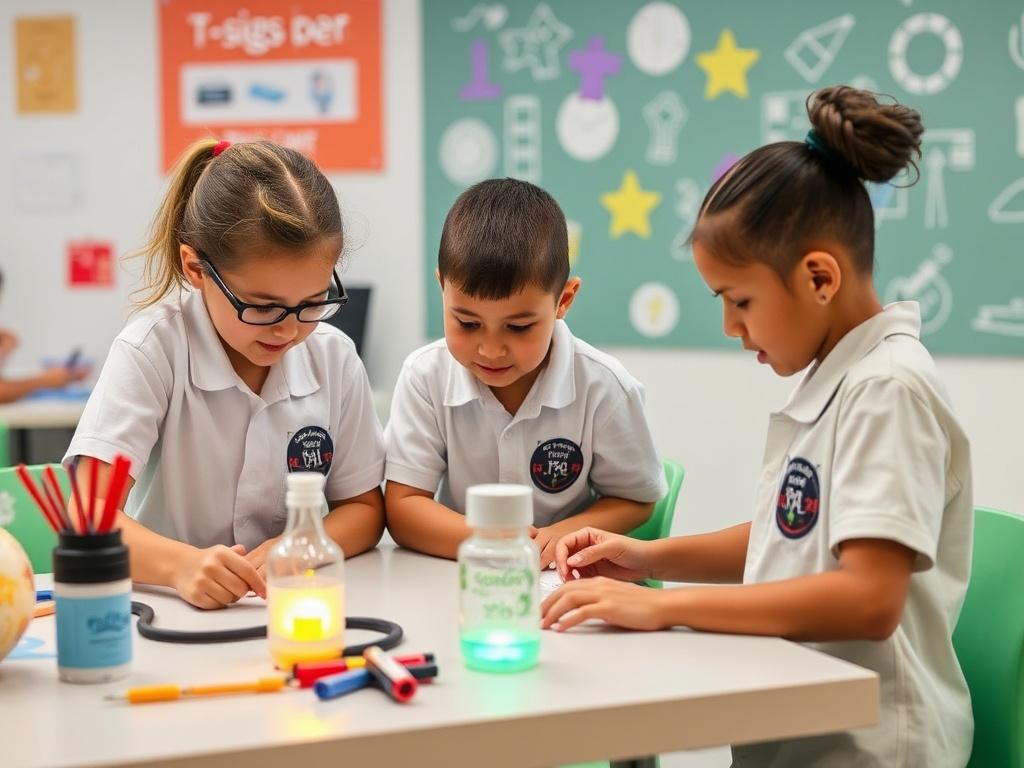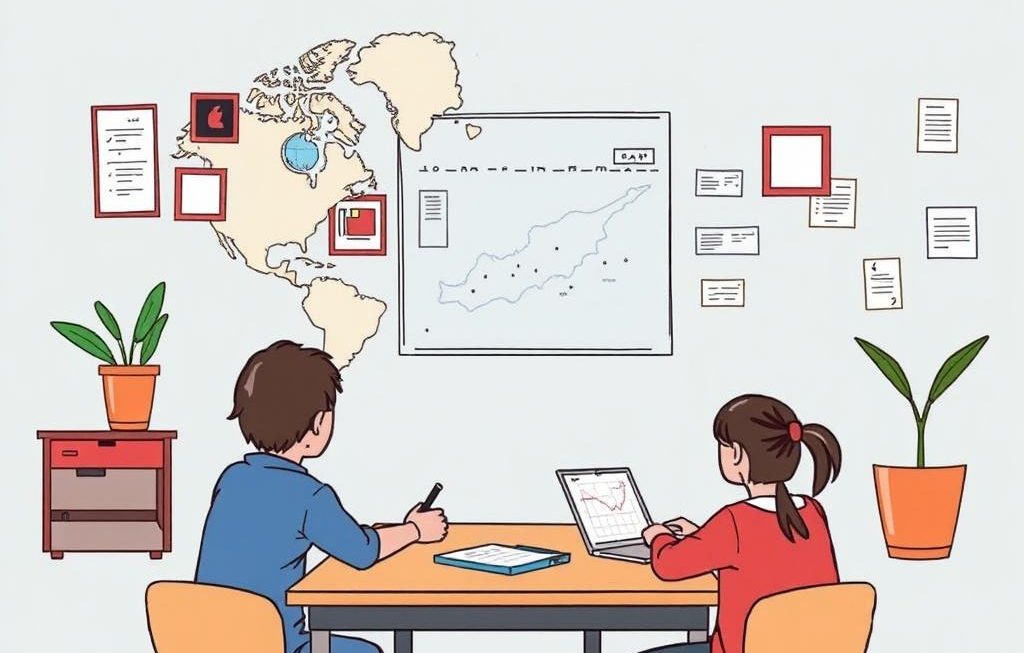Cyprus has witnessed a remarkable surge in educational innovation, particularly in international schools, as interest in houses for sale in Cyprus grows alongside a rising international community. Among these advancements, the integration of STEAM education—encompassing science, technology, engineering, arts, and mathematics—stands out as a crucial development. International school labs in Cyprus are evolving beyond traditional classrooms, becoming dynamic spaces where theory meets practical inquiry. This shift reflects a broader trend in technology in education Cyprus-wide and marks a significant step forward for STEM programs in Cyprus schools, reshaping how students engage with complex subjects.
In this article, we will explore how Cyprus international schools weave STEAM labs into their curriculum, the impact of these facilities, and the educational philosophy underpinning this approach. Rather than simply viewing STEAM as a collection of subjects, these schools see it as a comprehensive framework that fosters creativity, critical thinking, and problem-solving skills.
The Emergence of STEAM Education in Cyprus
STEAM education Cyprus has gained momentum in recent years, fueled by both global trends and local demands. The island’s international schools responded promptly, recognizing that exposing students to interdisciplinary learning tools equips them for future challenges. STEAM labs in these schools serve as hubs for hands-on experiments, project-based learning, and collaboration, breaking away from rote memorization and one-dimensional teaching methods.
The drive to incorporate arts into the traditional STEM framework acknowledges the importance of creativity and design thinking in innovation. These labs are purpose-built to accommodate a blend of scientific inquiry and artistic exploration, reflecting a holistic educational model.
STEAM is not just subjects in isolation; it’s about connecting disciplines to build creative problem-solvers for tomorrow.
Many Cyprus international schools have strategically invested in lab infrastructure and technology, providing students with access to cutting-edge tools like 3D printers, robotics kits, and digital fabrication workstations. This technological integration emphasizes active learning, enabling students to prototype, test, and iterate solutions in ways previously unimaginable.
Design and Purpose of International School Labs in Cyprus
The physical design of STEAM labs in Cyprus reflects their multipurpose nature. Unlike traditional science labs, these spaces accommodate diverse learning styles and project demands. Flexible furniture, modular workstations, and interactive digital displays create an environment adaptable to both individual and group work.
Labs are equipped with both analog and digital resources, from classic lab equipment to augmented reality tools, ensuring that students can experiment across various mediums. These resources support a broad spectrum of activities, from chemical experiments and coding challenges to creative design projects and music technology explorations.
| Lab Feature | Purpose | Example Usage |
|---|---|---|
| 3D Printing Stations | Support rapid prototyping and design visualization | Modeling architectural structures or engineering parts |
| Robotics Kits | Hands-on learning for programming and mechanical design | Building and coding autonomous robots |
| Digital Fabrication Tools | Innovative material manipulation and testing | Creating mixed media art projects or product prototypes |
| Interactive Whiteboards | Facilitating real-time collaboration and brainstorming | Group problem-solving sessions and concept mapping |
By blending these features, schools make STEAM labs places of discovery and experimentation where students feel encouraged to take intellectual risks.
Curricular Integration: Connecting Theory and Practice
One of the defining aspects of technology in education Cyprus international schools is their ability to marry practical lab work with rigorous academic theories. STEAM labs are not stand-alone arenas but interwoven into daily learning. For example, a physics lesson on mechanics smoothly transitions into building and testing catapults or vehicles in the lab.
This kind of seamless alignment encourages deeper understanding. It avoids the pitfall of compartmentalizing knowledge, instead fostering cognitive links across subject areas. By bringing abstract concepts into concrete contexts, students gain enriched perspectives and retain information more effectively.
STEAM labs blur the line between textbook learning and real-world application, making concepts tangible.
Teachers receive ongoing training to ensure that their lesson plans maximize lab resources. Rather than just replicating textbook experiments, lessons involve open-ended challenges where students design their procedures and interpret outcomes, tapping into creativity and critical analysis simultaneously. These practices promote higher-order thinking—a key goal of STEM programs Cyprus schools now prioritize.
Advancing STEM Programs in Cyprus Schools Through STEAM Labs
In Cyprus, STEM programs have traditionally emphasized mathematics, science, and technology, with schools now broadening the scope to the STEAM model. International schools, with their diverse student populations and access to global best practices, lead the move towards this integrated approach.
By embedding arts into science and technology education, schools encourage learners to approach problems with innovation and empathy. This is essential in fields like design engineering, digital media, and environmental technology, where human-centered problem solving is paramount.
With state-of-the-art international school labs Cyprus-wide, students develop skills valuable in the 21st-century workforce: collaboration, adaptability, and cross-disciplinary thinking. The labs also serve as venues for competitions, exhibitions, and community engagement projects, broadening their educational impact.
Case Study: STEAM in Action at a Leading Cyprus International School
At one prominent international school in Cyprus, students recently undertook a project integrating biology, coding, and design. Tasked with creating a sustainable urban garden model, they used sensors to monitor soil moisture and programmable systems to automate irrigation. This project required understanding biological processes, writing code, and designing functional hardware.
The STEAM lab provided all the necessary tools—from microcontrollers to gardening kits—allowing the team to prototype and refine their model iteratively. The final presentation included data analysis, artistic design elements, and a demonstration of their automated system’s efficiency, showcasing the power of blended learning.
Integrative STEAM projects turn students into inventors, developers, and analysts all at once.
Challenges and Future Directions in STEAM Education Cyprus
Implementing STEAM education and international school labs in Cyprus does not come without hurdles. Funding for technology-rich labs can be substantial, and recruiting educators proficient across multiple disciplines remains challenging. Moreover, balancing curriculum standards with innovative teaching approaches requires careful planning.
Nonetheless, schools are experimenting with partnerships—both local and international—to share resources and expertise. Some institutions collaborate with universities and tech companies for mentorships and access to cutting-edge developments. These alliances enrich the student experience and provide pathways to further study and careers.
Looking ahead, the expansion of STEAM education in Cyprus will likely focus on inclusivity and localization—ensuring all students can engage regardless of background and aligning projects with regional environmental and social issues. The goal is to cultivate learners capable of both global thinking and local action.
Why STEAM Labs Matter: Transforming Education and Beyond
STEAM labs in Cyprus international schools are more than just special rooms with gadgets. They signify a fundamental shift in how education can prepare young minds for a complex, interconnected world. Instead of passive absorption, students become active creators and critical thinkers.
This hands-on, integrative approach offers real advantages: boosted engagement, enhanced problem-solving skills, and the ability to connect diverse fields. Through STEAM labs, Cyprus is fostering a generation equipped to tackle challenges from climate change to technological innovation with confidence and creativity.
STEAM labs embody education’s future: immersive, interdisciplinary, and impactful.
As Cyprus continues its educational evolution, integrating STEAM labs into international school curricula stands as a promising beacon—inviting students, educators, and communities alike to rethink learning’s potential.
Unlocking New Possibilities: How STEAM Shapes Tomorrow’s Cypriot Students
STEAM education Cyprus-wide is transforming classrooms into incubators of ingenuity, offering students more than just facts—they gain tools to invent solutions, collaborate across cultures, and envision futures yet unseen. For international schools on the island, STEAM labs represent a commitment to preparing learners for a rapidly changing world, bridging academic knowledge with practical skills.
The impact extends beyond school walls, influencing Cyprus’s economic and technological landscape, attracting families interested in quality education, and enhancing the appeal of the island for those exploring houses for sale in Cyprus with long-term educational prospects in mind.
Ultimately, these initiatives set a new standard for education, proving that with the right environment, tools, and mindset, young people can shape their futures—and the world’s—with unprecedented creativity and insight.
Frequently Asked Questions
- What is the difference between STEM and STEAM education?
STEM focuses on science, technology, engineering, and mathematics, while STEAM adds the arts to encourage creativity and innovation alongside technical skills. - How do STEAM labs benefit students in international schools in Cyprus?
They provide hands-on learning opportunities that enhance problem-solving, collaboration, and integrate theoretical concepts with real-world applications. - Are STEAM labs expensive to set up and maintain?
Yes, initially, but many schools offset costs through partnerships and phased investments, seeing it as crucial for educational excellence and student engagement. - How do schools integrate STEAM labs into their existing curriculum?
Through project-based learning, interdisciplinary lessons, and teacher training that aligns lab activities with academic standards. - Can STEAM education help students with non-technical interests?
Absolutely. The inclusion of arts encourages students with diverse talents and interests to engage in scientific and technological contexts creatively. - What role does technology play in international school labs in Cyprus?
Technology is central, providing tools like 3D printers, coding platforms, and interactive media that support innovative learning and experimentation. - Is the focus on STEAM education growing in Cyprus?
Yes, schools increasingly adopt STEAM models to prepare students for future challenges, driven by both local demand and global educational trends.



